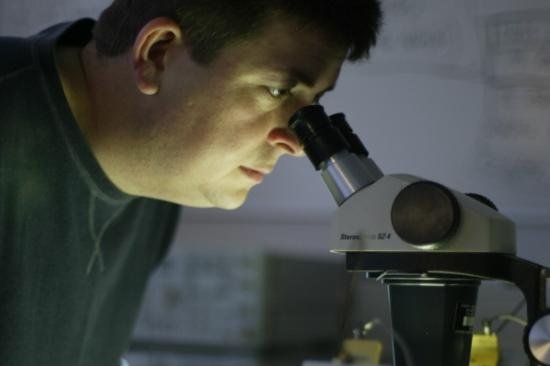Professor Adrian Porch, pictured, and researchers at Cardiff University have designed a device that measures blood glucose without requiring patients to prick their finger, and may allow for the continuous monitoring of levels. Photo by Cardiff University
CARDIFF, Wales, May 5 (UPI) -- People with diabetes are required to self-test their blood glucose, generally requiring them to prick a finger and test their blood using chemically-coated paper and a small device -- but scientists in Wales think they've got a better device that will allow for more continuous monitoring.
Scientists at Cardiff University have designed a device that tests glucose levels through the skin using microwaves, eliminating the need to bleed and testing supplies that have an expiration date.
The device can be stuck to a person's arm and worn discreetly, allowing for continuous monitoring of blood glucose -- even over the Web, allowing doctors to monitor patient conditions from afar as well.
"Patients are very keen on this," Stephen Luzio, a professor at Swansea University who has been working with scientists at Cardiff University, said in a press release. "One of the big problems with patients measuring their glucose is they don't like pricking their finger, so there's a lot of interest."
The scientists have been working on the device since 2008 on a $1.4 million grant from the Wellcome Trust, a U.K.-based health charity, to find an easier, less invasive method of diabetes monitoring.
The device is attached to the arm or body of a patient using adhesive, and requires a patient's blood sample only when it is initially calibrated. Using microwave-based sensors, it monitors blood glucose, sending data to a mobile app or a computer.
"The monitor uses microwaves and is very safe," said Adrian Porch, a professor at Cardiff University. "The levels of microwaves are very, very low. If you think about a mobile phone then they are about a thousand times less than that."
Luzio and Porch have been carrying out trials with patients already, with more tests planned for later this year. They goal, they said, is to have a device available for use within five years.















